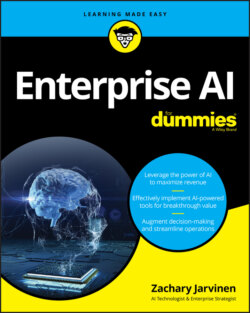Читать книгу Enterprise AI For Dummies - Zachary Jarvinen - Страница 41
Predictive analysis
ОглавлениеPredictive analysis uses data mining, machine learning, and predictive modeling to process transactional and historical data to identify trends that indicate areas of increased risk or reward.
Specifically, predictive modelling software uses known results from existing data to train the model to predict relationships and outcomes that are likely to occur in future data and recommend a course of action. It is a business function, not a math problem or a science exercise.
AI teams use predictive analytics when attempting to answer these types of questions:
Will my customer purchase product X?
Will my customer like a recommended song?
Which of my customers are likely to switch to a competitor or cancel their contract?
Of all recently submitted claims, which ones are likely to require an additional fraud investigation unit review?
Is this applicant likely to default on their car loan in the future?
Because predictive analytics delivers actionable insight, in-depth knowledge in the business domain is as important as an understanding of the various analytics techniques or the ability to code analytics solutions.
For example, predictive analytics can spot buying trends and patterns, but it takes someone with an understanding of the market to help the software interpret them and assess their relevance.
Predictive analysis is used in a wide range of markets:
Manufacturing and logistics operations apply predictive maintenance to ensure maximum performance and uptime for their assets.
Financial services and retail organizations use predictive analytics tools for many key business functions, including personalized marketing and fraud detection.
